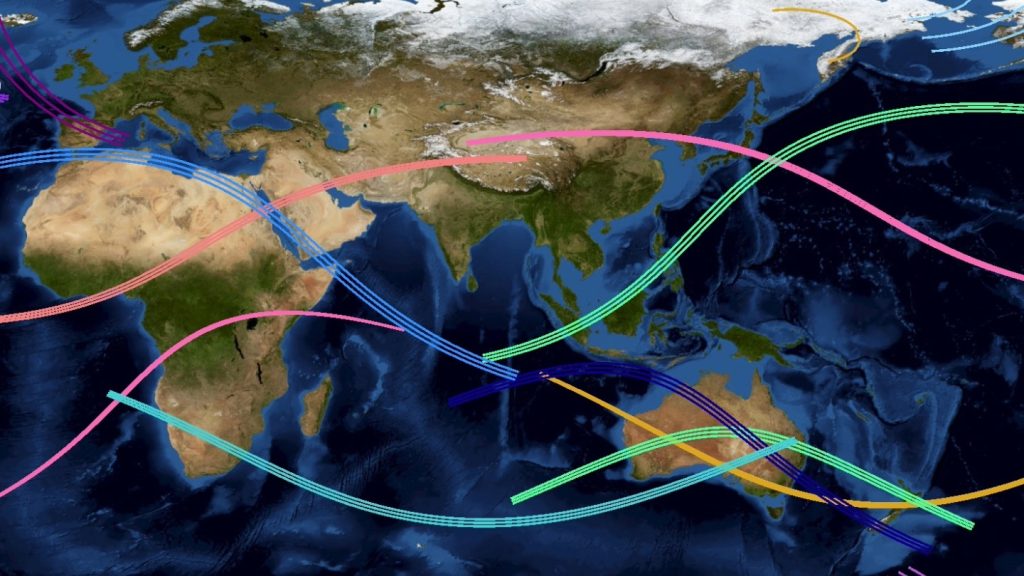On April 8, a total solar eclipse will sweep across North America, captivating more than 30 million people. However, even as the shadow leaves the continent, preparations are already underway for the next total eclipse and those that follow. Eclipses are based on the predictable motions of the Earth and moon, allowing astronomers to forecast eclipses across millennia. This predictability enables the precise mapping of upcoming solar eclipses, with Science News utilizing NASA’s database to show the paths of the next 15 total solar eclipses from 2024 to 2044.
The interactive map displays the paths of upcoming eclipses, marked by three lines: the northern and southern edges where a total eclipse will be visible, and the centerline where totality lasts the longest. People in the outer bands will experience a partial eclipse, while those on the centerline will witness the full event. Clicking on a path reveals details such as the date, time, duration, and width of the eclipse path. Users can also search for a specific location to see if any future eclipses will pass through that area, or click on white flags along this year’s eclipse path to determine the time and duration of totality at each spot.
Among the upcoming eclipses, there is one in 2043 that will pass through eastern Siberia, featuring a noncentral eclipse where the shadow does not intersect with Earth’s surface. In this rare event, only the southernmost limit of totality is visible on the map, since the rest of the shadow will miss Earth entirely. Eclipse enthusiasts interested in witnessing every type of eclipse may want to plan ahead for this unique occurrence. The next noncentral total eclipse is not expected until 2459, making this 2043 event a significant event for eclipse chasers.
The predictability of eclipses is based on the rhythmic motions of the Earth and moon, allowing astronomers to forecast these celestial events for thousands of years. By utilizing NASA’s database, astronomers can map out upcoming solar eclipses and predict their paths with precision. The interactive map created by Science News enables users to explore the paths of the next 15 total solar eclipses, providing details such as the date, time, duration, and width of each eclipse. Users can also search for specific locations to determine if any forthcoming eclipses will pass through those areas.
Overall, the interactive map showcases the paths of upcoming solar eclipses, providing crucial details and information for users interested in observing these celestial events. By clicking on specific paths, users can learn more about each eclipse, including the time and duration of totality at various locations. The predictability of eclipses enables astronomers to accurately forecast these events across millennia, unveiling a wondrous display of the Earth and moon’s motion in the cosmic dance of the universe. As we prepare for the upcoming solar eclipse on April 8, the map offers a glimpse into the future eclipses that will grace our skies in the years to come, reminding us of the beauty and wonder of the natural world.


